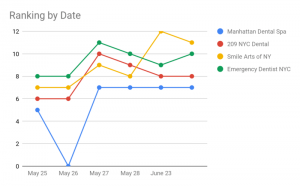— August 14, 2018

rawpixel / Pixabay
Every week we see the constant activity of growth and consolidation in the market generated by a continual stream of M&A announcements – some big, some small, but seemingly never-ending. In this context, we are often asked for our thoughts and to help answer key questions about the brand story and strategy once the deal is done and the companies are merged or acquired. Just think about how many questions there are surrounding what this means for customer experience, after the recent approval for Disney to acquire 21st Century Fox. Here is our take on the two fundamental questions that any brand must get right when it comes to M&A and marketing.
How do we determine what the new brand story and strategy should be now that Brand X is merging with, into, or acquiring Brand Y?
Very simply, you need to go through the process of the “new” brand story and narrative focusing on WHY this deal happened to begin with. (Hint: it’s not because the deal is financially accretive or because it allows you to strategically roll up part of your industry sector for better competitive positioning.) While those are, of course, very real business and strategy drivers, they are all about you and have nothing to do with your customers, nor do customers care about them. What your customers care about is what this new Story means for them. Why does this deal make sense from your customers’ point of view? What is the impact it’s having on your customers? How are their lives, in effect, changed? These are the questions you answer with your brand story.
In order to determine the new brand story, strategy, and brand architecture, you need to continually remind yourself why you are going through this change in the first place. Look at it through the lens of the outcome (impact): what can you offer to your customers that is different, better, and deeper than what you previously offered? Answering this question ensures that you don’t lose sight of what ultimately makes any M&A deal successful or not. Does it deepen and expand your relationship with your customers and their experience of what your brand (and now combined or new brand) means to them? What new possibilities give them a reason to think differently about your brand and what you can offer them? If you don’t answer these fundamental questions, then it really won’t matter how you rebrand yourself.
How do we determine what the new brand identity should be for the new, combined organization?
The most common mistake in thinking through new brand strategy is to make the company naming and product/service nomenclature the focus of the brand story. It may well be that you will need to change your company name, visual identity, and product or service names for a variety of reasons, ranging from legal requirements of the deal, to creating a new go-to-market Story and Strategy. And, yes, this gets complex quickly. However, a new logo or naming system is not the point, and often this can make it more difficult to focus on what really matters as you tackle these issues. In fact, this can become a distraction that runs the risk of adding confusion, not lessening it.
Fundamentally, your brand story following any M&A deal should be focused only on ensuring your customer understands what this means for them and why your (new) brand should matter to them. It is never about a new identity or look and feel. These are additive creative opportunities you can use to make your Story more accessible, as well as creatively and visually compelling. These are also a way for you to engage with and draw your customer into a conversation. Ideally, the new name, look and feel functions as the entry point into your brand Story: a creative and visual shorthand for why it matters to them.
Any new identity should have the stopping power to cut through the noise and make your customer pause for a few seconds to determine if they want to learn more about the Story behind the visuals or name. In other words, new brand identities and treatments should be designed from the perspective of the customer. They should provide your customer with a window or doorway into your Story and ignite curiosity. A new brand identity post-M&A provides an opportunity to do just this. And if they care about what they see or hear, they will walk through that doorway to engage with your brand. In fact, if your new brand identity doesn’t do that, you’re wasting your money. A new name or identity follows, and flows directly and only from, your Story and your Strategy for delivering that story to your customers, period. If it doesn’t do that, you are just creating nice, expensive art.
So, as you face the daunting and urgent challenge of figuring out what your new brand identity post-M&A should be, keep a few things in mind. Regardless of what clever name or appealing creative someone comes up with, it’s the following questions that will determine the success or failure of your brand Story:
- Why do you do what you do as this new organization or combined entity?
- What is it you now actually do to deliver against this purpose?
- How does your new combined entity activate this new Story and Strategy with old and new customers?
- Are you creating a defined destination and journey for your customers and your company that both your customers and your new organization fully understand? Do they understand why it matters to them?
- Are you applying the discipline of ruthless consistency of one message, one voice, one look, one feel, and a ruthlessly consistent customer experience of your story and products/services?
- Finally, does your new combined brand story and strategy pass the test of simplicity, clarity, and alignment? (And here’s a hint, if you aren’t sure, the answer is no.)
These questions might be short, but the answers can be hard to find if you’re looking in the wrong places. Always remember to keep a customer-centric point of view and operate on the ideals of simplicity, clarity, and alignment. For more on how to refine your brand story and transform your customer engagement with your story, check out TopRight’s Transformational Marketing ebook.
Business & Finance Articles on Business 2 Community
(57)






